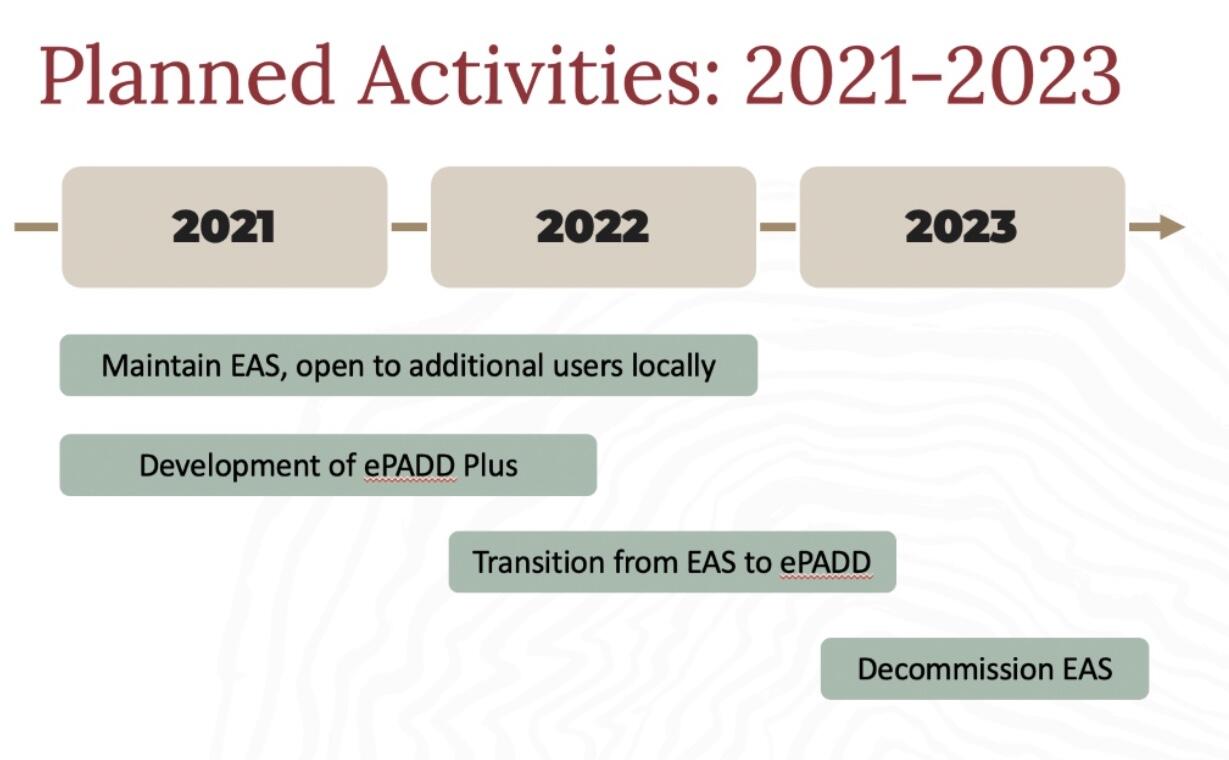On February 18th 2021, the Digital Preservation team invited colleagues across Harvard Library to pull up their chairs, squint at their Zoom screens, and learn a bit about the email archiving at Harvard Library. Stephen Abrams, Head of Digital Preservation, and Tricia Patterson, Digital Preservation Analyst, led a virtual presentation reviewing the history of local email archiving activities, introducing a new collaborative project, and forecasting the programmatic development for the next few years.
History of Email Archiving at Harvard
The presentation began with a look back at over a decade of commitment and leadership in the area of email archiving, highlighting work done by staff such as Andrea Goethals, Wendy Gogel, and Skip Kendall. After identifying the stewardship of email collections as a priority in 2008, these colleagues worked internally to develop technical capacity and externally to advance email archiving work and expertise, positioning Harvard as a leader in the field.
Harvard’s homegrown Email Archiving System (EAS) was developed in 2009, becoming one of the first tools developed specifically for processing and preservation email collections. By 2017, other similar tools had populated the digital archiving landscape, and Harvard’s priority became redeploying EAS as an open-source product that would interoperate with other complementary email archiving tools.
Collaboration with Stanford University Libraries and ePADD
In 2019, the Digital Preservation team partnered with Stanford Libraries, who had developed an emergent and popular open-source email archiving system known as ePADD, to align the EAS and ePADD development roadmap for enhanced interoperability and reduction of overlapping functionality. While EAS and ePADD share some of the same functionality, each system also has its own unique strengths. However, faced with shifting library priorities and reduced resources because of the global pandemic, the Harvard and Stanford teams reassessed their strategy and initiated a multi-institutional collaboration between Harvard, Stanford, and the University of Manchester.
During the presentation, Abrams introduced this new project, which will embed the preservation functionality of EAS into ePADD, which currently supports appraisal, processing, discovery, and delivery of email collections. The resulting product will provide a unified tool that better supports a more holistic lifecycle from appraisal through preservation. More information on the project, its partners, and its funding and development will be introduced in March 2021. Digital Preservation will be engaging the Harvard Library community by soliciting feedback on the technical requirements for the enhanced product and inviting use cases to ensure broad applicability across users.
Email Archiving roadmap for Harvard Library
Over the next year and a half, Digital Preservation will be managing the new collaborative project to enhance ePADD. During this time, EAS will be maintained for archives and special collections units that must continue to process and preserve mission-critical email records. In 2022, the focus will shift to adopting ePADD and providing the necessary training and workflow support. By 2023, EAS will be decommissioned, and Harvard Library will be fully converted to use of ePADD for the stewardship of archival email collections. In the interim, Library units wishing to take advantage of EAS for immediate needs can do so.

Slide image from the presentation, 2/18/2021
For more detailed information—or for those unable to attend the live presentation—the slides and recording of the event are available on the Digital Preservation events and presentations wiki page.


